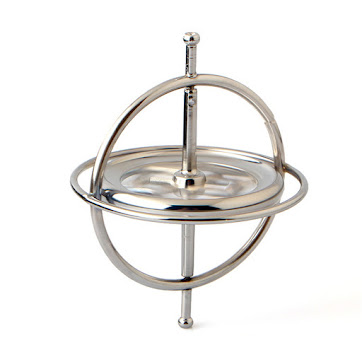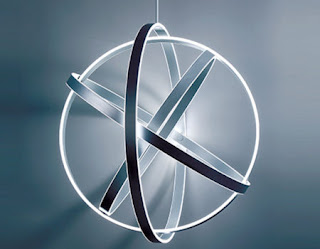Zim's was an east county landmark for 70 years. The huge gyroscopic globe revolved above the tower like a beacon. A business thrived underneath it. This picture is from 1963.
Zimmerman's 12-Mile Store
Opened in 1938 by Carl Zimmerman, the store was a Gresham landmark for 70 years. The store was located on 223rd and SE Stark Street and comprised of 3 and 1/2 acres on the corner. It was named for the distance from the store to downtown Portland. Started as a small gas station/grocery, Zimmerman owned the grocery store on the corner for decades selling produce, gasoline, television and also had a feed store at one time. It was known as Zim's 12 Mile Store and eventually grew to be 30,000 square feet, with a post office, pharmacy and a butcher. The store had a 30 foot tower that featured a large globe with the Zim's logo. In 2005, the building was taken down, replaced by Weston Kia.
Carl Zimmerman shown at gas pump first year of store opening.
1946: The store evolves with addition of corner tower
1954: Store expansion is evident again
1963: Globe rotates like a beacon over East County
1980: Globe stops rotating
History of Zim's `
*From Gresham Historical Society*
Built in the late 1800s by Joseph Engles, the one-room 12-Mile Country Store would change hands over the years while expanding into a modern-day supermarket that also offered delivery service, a lunch counter, rented moving trucks, and operated as a post office as well as a pharmacy. In the early 1900s, George Kinney bought and operated the store, selling it to George Page in 1919. Page lost the store to Edward Aylsworth in 1932 during the Great Depression.
Carl and Ada Zimmerman leased the store from Edward and Minnie Aylsworth in 1938 and purchased it in 1943, remodeling and expanding it into the area’s first supermarket. In 1946, the Zimmerman's hired Portland architect Pietro Belluschi to design a new store with a large tower. In 1956, the store was topped with the giant spinning, orange and red neon globe which could be seen for miles across the east county. Soon, 4 loudspeakers were installed under the globe to broadcast carillon chimes and music through loudspeakers. They would also chime every hour on-the-hour.
It was called 12-Mile Store because it was located on Baseline Road (later Stark Street), twelve miles from city hall in Portland. At one time or another, it operated 24 hours a day, selling everything from bikes, groceries, hardware, appliances, and school supplies. They had a feed store, a gas pump, a soda fountain, and 500 frozen food lockers where shoppers and hunters brought their game and other meats to be butchered and frozen.
The Zimmermans were more than just store operators. They ran a thriving business, but they were not averse to helping those in need. That included extending credit and taking goods in trade from those without cash. During World War II, when Japanese-American farmers were shipped off to internment camps, the Zimmermans kept their goods in the store’s basement and returned them when they were released after the war.
During the Vanport Flood of 1948, the Zimmermans brought coffee, rope, supplies, and their trucks to help people forced out of their homes. During the 1962 Columbus Day storm, the Zimmermans stayed at the store all night to attend to the needs of people who could not get home because the streets were blocked by fallen trees and utility poles.
Three employees worked at the store in 1938 and the number grew to 38 in 1952. The Zimmermans were innovators; they will be remembered for double-page newspaper ads with the "Zim Says" section and outlandish advertising stunts including pitching live turkeys off the roof of the store for people who wanted a free turkey dinner for Thanksgiving. Zimmerman brought in the circus, held a threshing bee, musical concerts and barbeques for his shoppers.
Santa Claus came to Zim’s Store in a helicopter and after a heavy snowfall; the grocer named an especially large drift “Mt. Zim” and offered prizes to whoever could predict when it would melt. Zimmerman brought in a live buffalo, displayed a caged lion, chimps, and other animals to delight his customers. A breeder of Shetland ponies, Carl Zimmerman started a pony farm next to the store and offered pony rides for children. When Fred Meyer opened a new store in Rockwood two miles away in 1957, Carl Zimmerman hired a plane to tow a welcome banner from Zim’s Shopping Center over the opening. After bouts with ill health, Carl Zimmerman died of a heart attack in 1959. Ada Zimmerman ran the store by herself, working seven days a week, till 1969 when she leased the store to John Zupan and Chuck Gaylord. Three years later, Gaylord bought out Zupan’s share of the business. Gaylord’s wife Pat and their four children ran the store until retirement in 1992 when they sold the business to Don and Kathie Yeager. In 1993, Zim's Red Apple Market closed for good. The grocery business had come to an end. In 1997, Dan McVey reopened the store selling motorcycles, it was called Zim's Yamaha Sports Plaza. Then it became Action Motor Sports. The store closed in 2001 and the building was demolished in 2005 when Weston Buick Pontiac GMC and Kia built a new showroom and dealership in its place.
East County Beacon: The Zim's Neon Sign
An Artful Blend of Motion and Light
Not much is known about the concept/design of the sign or who built it. We know it was placed on top of the corner tower at Zim's store in 1956 and was taken down in 2005, just before the building was demolished. It's rumored the Zimmerman family is still in possession of the unique sign.
The gyroscopic inspired sign, which originally rotated above the store, looked very futuristic back in 1956. Within the sphere, were the words Zim's and Shopping Center on opposite sides. The sign was lit with red and orange neon and was so visible, it was used by pilots to navigate and guide aircraft at night.
Initially, the sign spun around, but around 1980, it stopped moving and eventually, the sign went dim.
It was an area landmark from the day it was installed until is was taken down.
Zim's was spelled out in a large, cursive font while shopping center was printed in smaller capital block letters.









